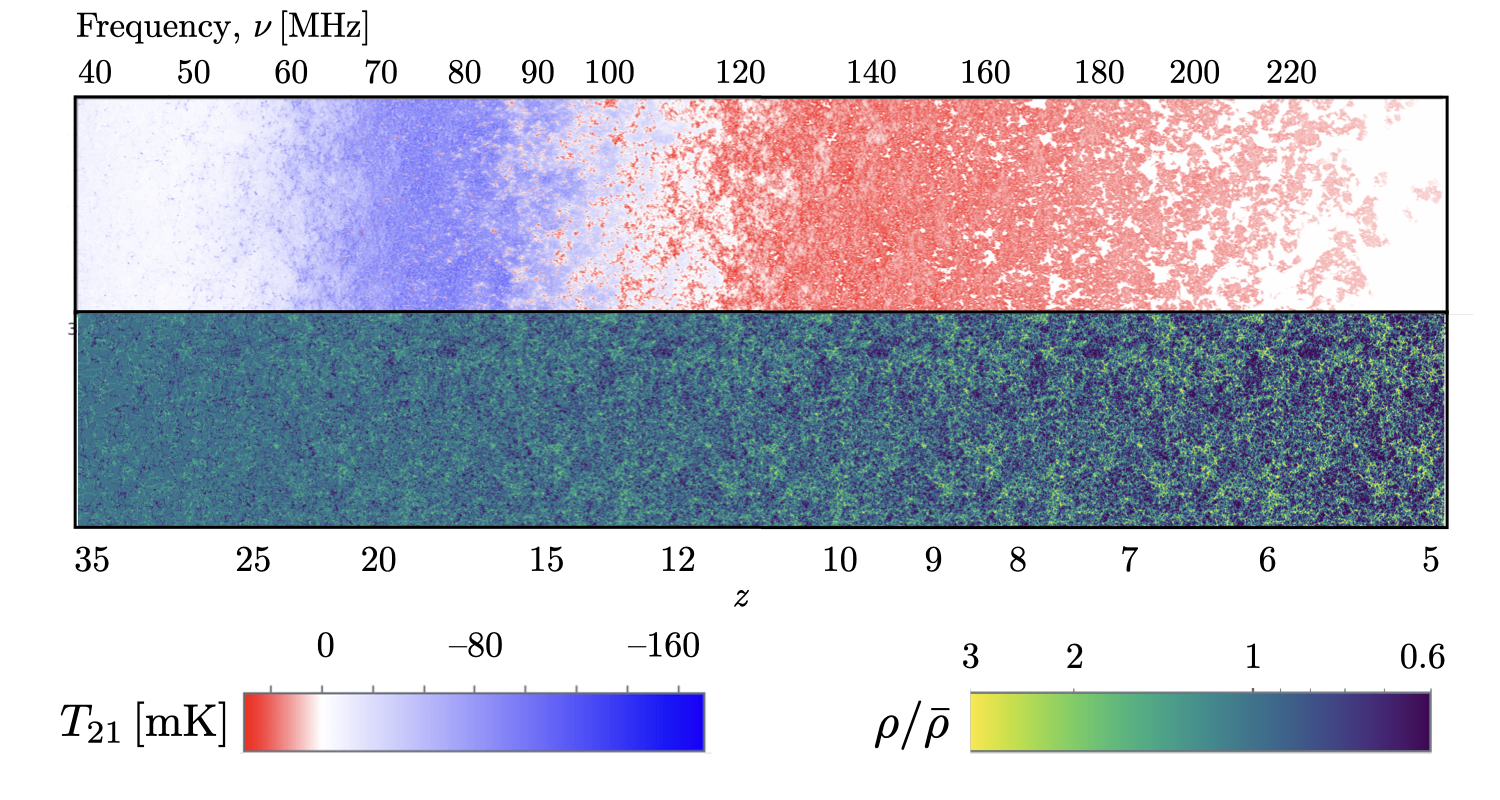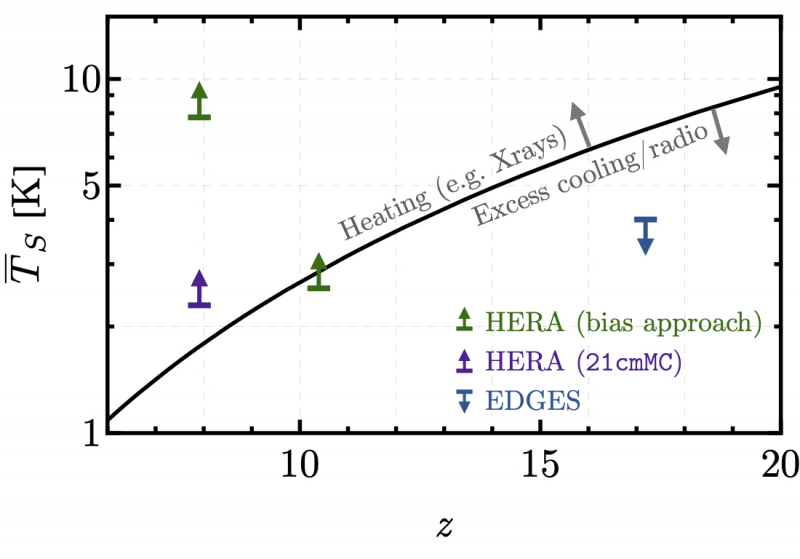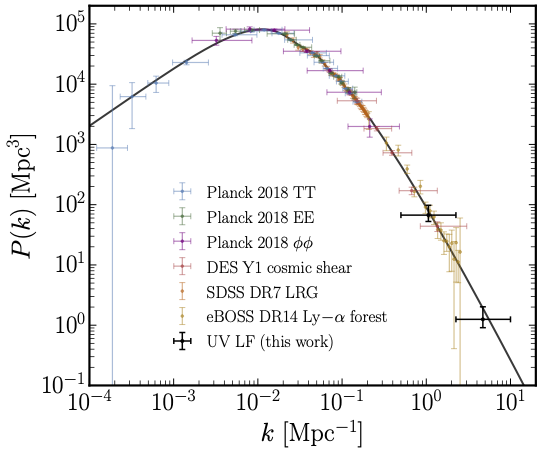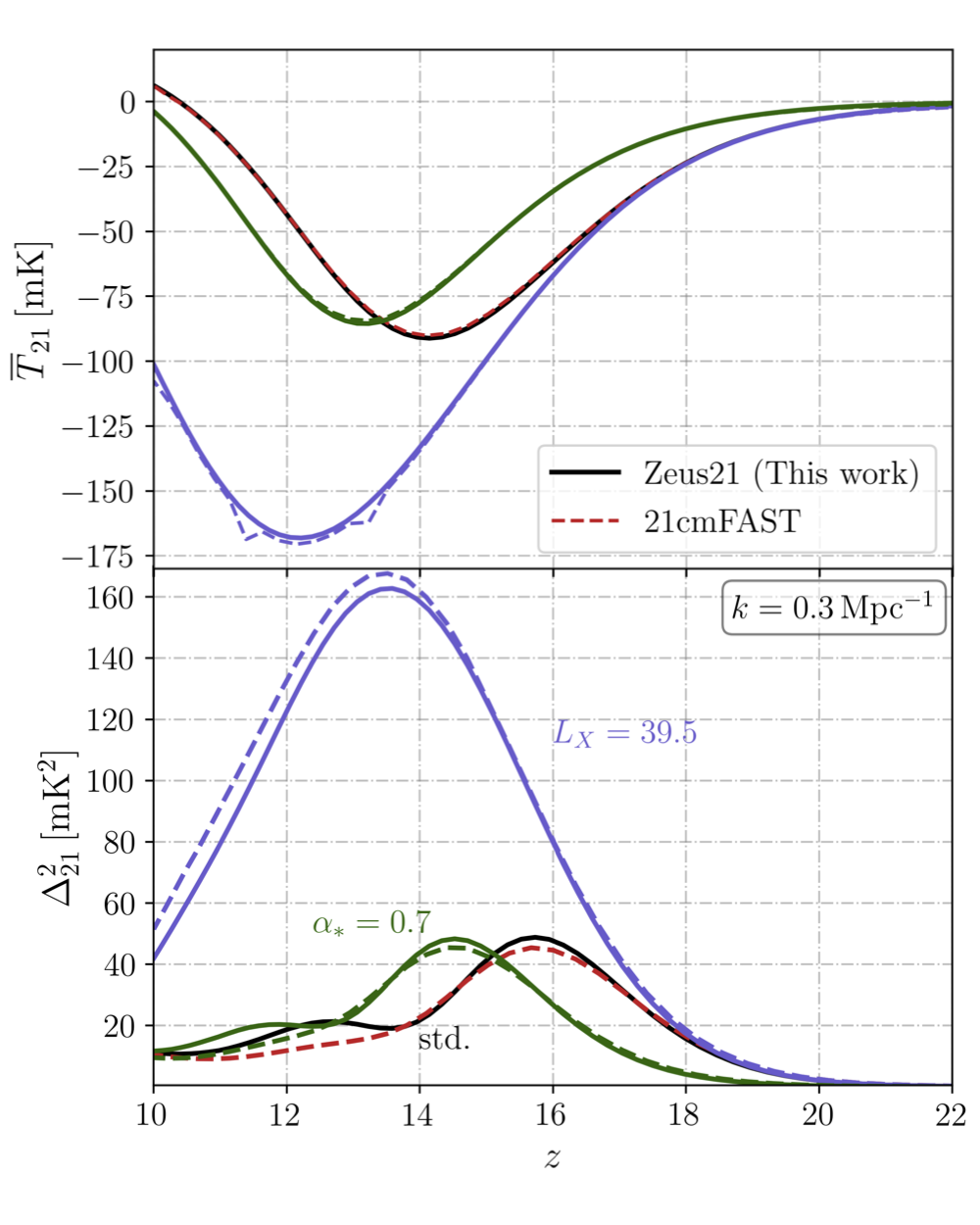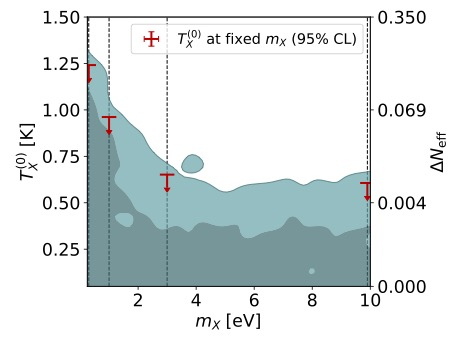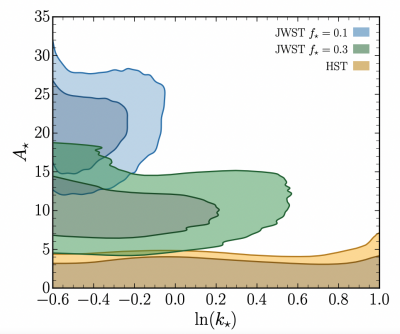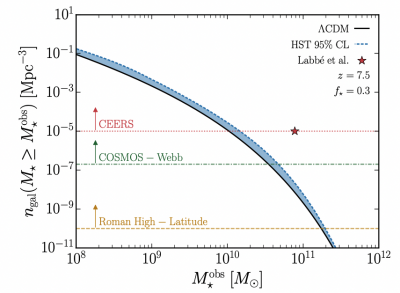A big part of my work is on extracting cosmology and astrophysics from 21-cm data. Here are some examples:
In two companion papers (1 and 2) I introduced 21cmvFAST, a version of 21cmFAST that included the effect of the dark matter-baryon relative velocities on the first galaxies. I showed that these produce velocity-induced acoustic oscillations (VAOs, or wiggles) in the 21-cm signal during cosmic dawn, which can be used as a standard ruler to cosmic dawn (z=10-20). In this paper I made the velocities part of the standard 21cmFAST software, and updated our reference 21-cm models of the first galaxies (see EOS21 for details and nice animations).
I have also developed the 21-cm line as a tool to learn about dark matter (DM). Here we argued that cosmic dawn is an ideal location to search for millicharged DM, and that only a sub-percent fraction of the DM is required to explain the EDGES anomaly at z=17. I have led the HERA theory analysis of DM, and found more stringent limits, though at z=8-10. Upcoming high-z HERA data will be able to test the origin of the EDGES depth, if real. The 21-cm line also has information about the timing of the first galaxies, which in this paper I showed makes it is sensitive to the small-scale nature of dark matter, at much higher wavenumbers than currently accessible (k~50/Mpc). This can help identify self-interacting DM, like in the ETHOS models.
The future of 21-cm is to map the fluctuations across many redshifts and scales, which show a rich phenomenology of processes, ranging from heating of the IGM (likely due to high-mass X-ray binaries), to its reionization (due to galaxies of different masses). Key to understand all these processes are fast simulations across a range of scales. These are needed to explore the vast astrophysical---and cosmological---parameter space. Below I show a lightcone of the 21-cm signal across cosmic dawn and the EoR, along with the densities that seed the fluctuations.
